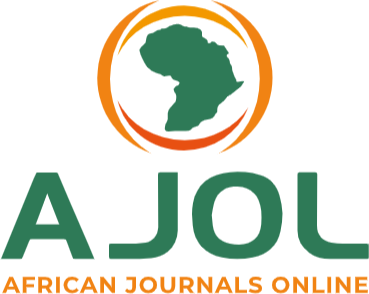Desarrollo urbano insostenible frente al aumento del nivel del mar en Angola
Los casos del Barrio de Camuxiba (Luanda) y Porto Amboim (Kwanza Sur)
DOI:
https://doi.org/10.5281/zenodo.13237523Palavras-chave:
Crescimento urbano, Elevação do nível do mar, Insustentável, Bairro da CamuxibaResumo
O objeto de estudo são as interferências criadas pelo desenvolvimento urbano em contacto com o mar, imerso num processo de subida do seu nível e, consequentemente, na incidência das ondas. Este trabalho incide sobre dois locais com dinâmicas de crescimento urbano distintas: um baseado na ocupação do espaço sem controlo ou fiscalização, no Bairro da Camuxiba (Luanda); e outro com um tecido urbano mais ordenado, na Praia do Porto Amboim, entre a EN-100 e o Oceano Atlântico. A metodologia é exploratória e descritiva, baseada na utilização de imagens de satélite disponíveis no Google Earth Pro™. Em Camuxiba as imagens dão uma janela temporal entre 2001 e 2023, em Porto Amboim apenas de 2010 a 2023. Os resultados mostram que, apesar de possuírem modelos de crescimento diferentes, o crescimento é insustentável e o crescimento está fadado ao fracasso, sendo os aspectos ambientais e sociais os mais afetados pela insustentabilidade.
Referências
Almeida, A. C. (2019). Riscos de Erosão Costeira [Coastal Erosion Risks]. In L. Lourenço, & N. Adélia (Coord.), Catástrofes mistas : uma perspetiva ambiental [World catastrophes: an environmental perspective] (https://doi.org/10.14195/978-989-26-1901-9) (109-154). Imprensa da Universidade de Coimbra. https://doi.org/10.14195/978-989-26-1901-95
Amaral, I. (2002). Luanda e os seus dois arcos complexos de vulnerabilidade e risco: o das restingas e ilhas baixas e o das escarpas abarrocadas. [Luanda and its two complex arcs of vulnerability and risk: the sandbanks and low islands and the barricaded escarpments] Territorium, 9, 89-115. http://dx.doi.org/10.14195/1647-772396
Angola-Ministério do Ambiente. (2019). Plano de Adaptação às Alterações Climáticas da Zona Costeira de Angola. [Adaptation Plan to Climate Change in the Coastal Zone of Angola] Luanda: Ministério do Ambiente. https://info.undp.org/docs/pdc/Documents/AGO/Get2C_ProdutoIV.1%20-%20Final%20Draft.pdf
Alvarez-Martinez, F. (2016). Modelling the Impact of Coastal Defence Structures on the Nearshore Morphodynamics. (Tese de Doutoramento). Cardiff: Cardiff University. https://orca.cardiff.ac.uk/id/eprint/99018/1/2017Alvarez-MartinezFPhD.pdf
Bettencourt, A. C. (2011). Qualificação e reabilitação de áreas urbanas críticas. Os musseques de Luanda. [Qualification and rehabilitation of critical urban areas The musseques of Luanda] (Dissertação de Mestrado Universidade Técnica de Lisboa). Repositório Universidade Técnica de Lisboa. https://www.repository.utl.pt/handle/10400.5/3654
Burity, L. S. (2023). Habitar o (in)formal: o caso dos musseques de Luanda: perspetivas de futuro numa sociedade participativa [Inhabiting the (in)formal: the case of Luanda's musseques: prospects for the future in a participatory society]. (Dissertação de Mestrado). Lisboa: Universidade Lusíada. Recuperado 10 de Septiembre 2023, de http://repositorio.ulusiada.pt/bitstream/11067/7028/1/mia_l%C3%ADdia_burity_dissertacao.pdf
Cain, A. (2011). Monitoria Participativa da Pobreza Urbana e as ODMs. [Participatory Monitoring of Urban Poverty and the MDGs] Luanda: DW-Development Workshop Luanda. https://dw.angonet.org/content/allan-cain-rede-da-probeza-monitoria-participativo-da-pobreza
Cain, A. (2014). Adaptação às Alterações Climáticas e Gestão de Recursos Hídricos nos Assentamentos Costeiros em Angola. [Adaptation to Climate Change and Management of Water Resources in Coastal Settlements in Angola] IIED - International Institute for Environment and Development. https://pt.slideshare.net/DevelopmentWorkshopAngola/allan-cain-alteracoes-climaticas-e-assentamentos- costeiros-dw-debate-18072014
Cain, A. (2016). Planeamento das Cidades Costeiras de Angola para a Adaptação Climática. [Planning of Angola's Coastal Cities for Climate Adaptation] Luanda: DW-Development Workshop Angola. https://www.slideshare.net/DevelopmentWorkshopAngola/20160331-hausing-finance-planeamento-das- cidades-costeiras-de-angola-para-a-adaptacao-climatica-allan-cain?from_action=save
Cain, A. (2017). Water resource management under a changing climate in Angola’s coastal settlements. London: IIED - International Institute for Environment and Development. https://pubs.iied.org/sites/default/files/pdfs/migrate/10833IIED.pdf
Cazenave, A., & Le Cozannet, G. (2013). Sea level rise and its coastal impacts. Earth’s Future, 2, pp. 15-34. https://doi.org/10.1002/2013EF000188
Cazenave, A., & Llovel, W. (2010). Contemporary Sea Level Rise. Annual Review of Marine Science, 2, 145-173. https://doi.org/10.1146/annurev-marine-120308-081105
Chambers, D., Merrifield, M., & Nerem, R. (2012). Is there a 60-year oscillation in global mean sea level? Geophysical Research Letters, 39. https://doi.org/10.1029/2012GL052885
Church, J., & White, N. (2006). A 20th century acceleration in global sea-level rise. Geophysical Research Letters, 33. https://doi.org/10.1029/2005GL024826
Church, J., & White, N. (2011). Sea-Level Rise from the Late 19th to the Early 21st Century. Surveys in Geophysics, 32, 585-602. https://doi.org/10.1007/s10712-011-9119-1
Clark, P., Shakun, J., Marcott, S., Mix, A., Eby, M., Kulp, S., . . . Plattner, G.-K. (2016). Consequences of twenty-first- century policy for multi-millennial climate and sea-level change. Nature Climate Change, 10. https://doi.org/10.1038/nclimate2923
Flora, Y. A. (2018). Bairro das Ingombotas, em Luanda: Herança Urbanística e Arquitetónica. [Bairro das Ingombotas, in Luanda: Urban and Architectural Heritage] (Dissertação de Mestrado Universidade Técnica de Lisboa). Repositório da Universidade Técnica de Lisboa. https://www.repository.utl.pt/handle/10400.5/17968?locale=en
Gomes, C. A. (2013). O desafio da protecção do ambiente em Angola. [The challenge of protecting the environment in Angola] Revista Campo Jurídico, 1, (1), 13-34. http://www.fd.ulisboa.pt/wp- content/uploads/2015/02/ANGOLAAMBIENTE_-carla-amado-gomes.pdf
GPCS-Governo Provincial de Cuanza Sul. (2017). Estudo do Sector do Turismo do Município de Porto Amboim. [Study of the Tourism Sector of the Municipality of Porto Amboim] Luanda: FAS – Fundo de Apoio Social e Adaministração Municipal de Porto Amboim. http://fas.co.ao/wp-content/uploads/2018/03/ESTUDO-DO- SECTOR-DO-TURISMO_PORTO-AMBOIM.pdf
Gregory, J., White, N., Church, J., Bierkens, M., Box, J., van den Broeke, M., . . . van de Wal, R. (2013). Twentieth-Century Global-Mean Sea Level Rise: Is the Whole Greater than the Sum of the Parts? Journal of Climate, 26, 4476-4499. https://doi.org/10.1175/JCLI-D-12-00319.1
Hattori, M. (1982). Field Study on Onshore-Offshore Sediment Transport. In B. Edge (Ed.), 18th Conference on Coastal Engineering. 1(18). Cape Town: ASCE. https://doi.org/10.9753/icce.v18.58
INE-Angola. (2016). Projecção da População 2014-2050. [Population Projection 2014-2050] Luanda: INE (Intituto Nacional de Estatística). https://leadershipbt.com/INE/?option=com_fileman&view=file&routed=1&name=PROJEC%C3%87%C3%83 O%20NACIONAL.pdf&folder=publicacao%2FPopulacao%20e%20sociedade&container=fileman- files&exp_token=eyJ0eXAiOiJKV1QiLCJhbGciOiJIUzI1NiJ9.eyJleHAiOjE2MTk1MzE4NjUsImlhdC
Jevrejeva, S., Moore, J., Grinsted, A., & Woodworth, P. (2008). Recent global sea level acceleration started over 200 years ago? Geophysical Research Letters, 35. https://doi.org/10.1029/2008GL033611
Jevrejeva, S., Moore, J., Grinsted, A., Matthews, A., & Spada, G. (2014). Trends and acceleration in global and regional sea levels since 1807. Global and Planetary Change, 113, 11-22. https://doi.org/10.1016/j.gloplacha.2013.12.004
Lim, C., Hwang, S., & Lee, J. L. (2022). An analytical model for beach erosion downdrift of groins: case study of Jeongdongjin Beach, Korea. Earth Surface Dynamics, 10(2), 151-163. https://doi.org/10.5194/esurf-10- 151-2022
Martín, J., Bethencourt, J., & Cuevas-Agulló, E. (2012). Assessment of global warning on the island of Tenerife, Canary Islands (Spain). Trends in minimum, maximum and mean temperatures since 1944. Climatic Change, 114(2), 343-355. https://doi.org/10.1007/s10584-012-0407-7
Milne, G., Gehrels, W., Hughes, C., & Tamiseia, M. (2009). Identifying the causes of sea-level change. Nature Geoscience, 2(7), 471-478. https://doi.org/10.1038/ngeo544
ODIC, & DKN. (2014). The IPCC’s Fifth Assessment Report. What’s in it for Africa? Overseas Development Institute and Climate and Development Knowledge Network. https://cdkn.org/wpcontent/uploads/2014/04/J1731_CDKN_FifthAssesmentReportWEB.pdf
Paskoff, R. (1998). La crise des plages: pénuire de sédiments. [The beach crisis: sediment shortage] Mappemonde, 52(4). http://www.mgm.fr/PUB/Mappemonde/M498/Paskoff.pdf
Paskoff, R. (2000). Le changement climatique, l'élévation du niveau de la mer et les espaces côtiers : synthèse et perspectives. [Climate change, sea level rise and coastal areas: summary and perspectives] Actes du colloque d’Arles 12 et 13 octobre 2000 Le Changement climatique et les espaces côtiers, [Proceedings of the Arles symposium October 12 and 13, 2000 Climate change and coastal áreas] (88-91). Arles, França. https://inis.iaea.org/collection/NCLCollectionStore/_Public/36/041/36041343.pdf?r=1&r=1
Saengsupavanich, C., Ariffin, E. H., Yun, L. S., & Pereira, D. A. (2022). Environmental impact of submerged and emerged breakwaters. Heliyon, 8(12), 1-9. https://doi.org/10.1016/j.heliyon.2022.e12626
Secuma, A. J. (2012). Modelação do Crescimento Urbano da Província de Luanda, Angola. [Modeling Urban Growth in the Province of Luanda, Angola] (Dissertação de Mestrado Universidade Nova de Lisboa). Repositório Universidade Nova de Lisboa. https://run.unl.pt/handle/10362/9214?locale=en
Simm, J., Orsini, A., Blanco, B., Lee, A., Sands, P., Williams, J., . . . Spencer, R. (2020). Groynes in coastal engineering. Guide to design, monitoring and maintenance of narrow footprint groynes. London: CIRIA-Construction Industry Research and Information Association. Recuperado 11 Junio, 2023, de https://southerncoastalgroup-scopac.org.uk/wp-content/uploads/2021/01/Groynes_in_coastal_engineering_CIRIA_C793_May_2020.pdf
Wahl, T., Brown, S., Haigh, I. D., & Nilsen, J. E. (2018). Coastal Sea Levels, Impacts, and Adaptation. Journal of Marine Science and Engineering, 6, 19, 7. https://doi.org/10.3390/jmse6010019
Downloads
Publicado
Como Citar
Edição
Secção
Licença
Direitos de Autor (c) 2024 José Francisco Bethencourt-González

Este trabalho encontra-se publicado com a Licença Internacional Creative Commons Atribuição-NãoComercial-SemDerivações 4.0.






















